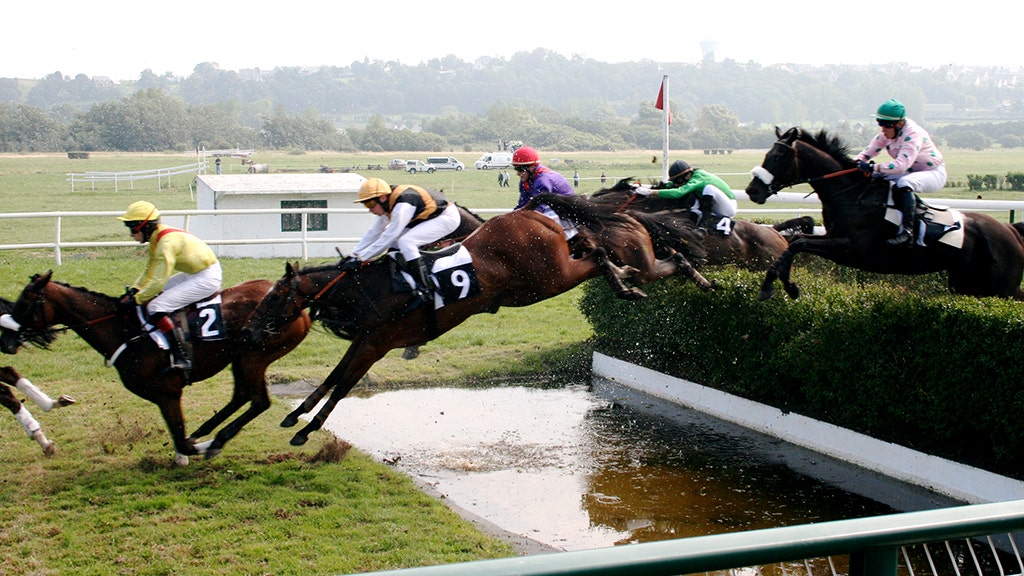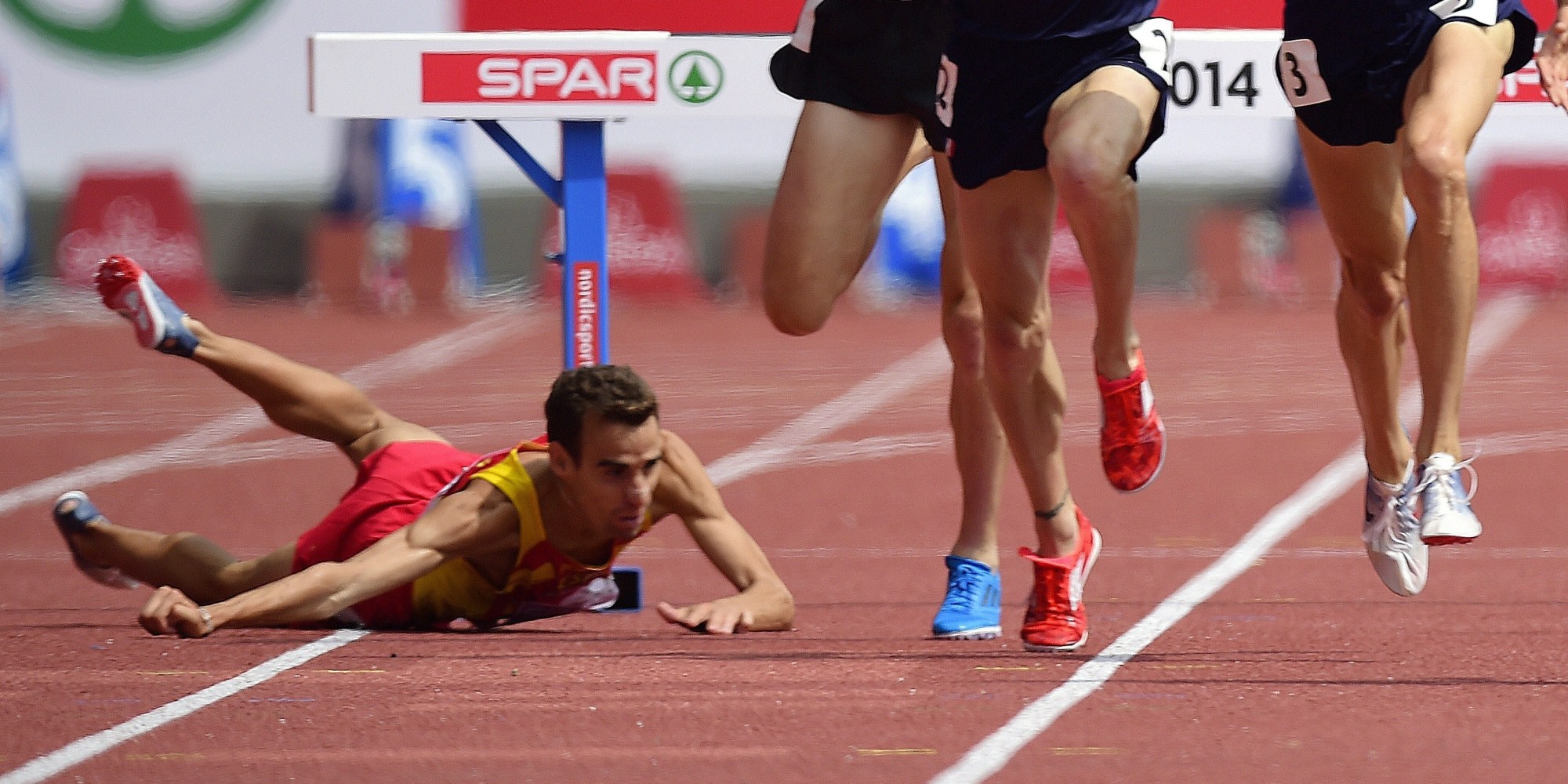The Mechanics of a Steeplechase Fall

Steeplechase racing, with its unique combination of speed, agility, and obstacles, presents a heightened risk of falls compared to other equestrian disciplines. These falls can be caused by a variety of factors, including rider error, horse error, and course conditions. Understanding the mechanics of a steeplechase fall is crucial for riders, trainers, and spectators to mitigate risks and ensure the safety of both horse and rider.
Types of Falls in Steeplechase Racing
Steeplechase falls can occur at various points in the race, but the obstacles pose unique challenges.
- Fence Falls: The most common type of fall occurs while negotiating fences. The horse may misjudge the distance, lose its footing, or stumble while taking off. This can lead to the horse falling or the rider being dislodged.
- Water Jump Falls: Water jumps are another obstacle that can cause falls. Horses may struggle to maintain their balance in the water or misjudge the landing, leading to a fall.
- Track Falls: Falls can also occur on the track itself, often due to a horse tripping, losing its footing, or being clipped by another horse.
Biomechanics of a Steeplechase Fall
A steeplechase fall involves a complex interplay of forces and movements.
- Impact Forces: When a horse falls, the rider experiences significant impact forces. These forces can be magnified by the speed of the horse and the angle of the fall.
- Rotational Forces: As the horse falls, the rider’s body can be subjected to rotational forces, which can cause injuries to the spine, head, and neck.
- Shear Forces: Falls can also generate shear forces, which can lead to injuries to ligaments and tendons.
Factors Contributing to a Steeplechase Fall
A variety of factors can contribute to a steeplechase fall, including:
- Rider Error: Inexperience, poor judgment, or a lack of focus can lead to the rider making mistakes that result in a fall.
- Horse Error: Horses can also make mistakes, such as misjudging an obstacle, losing their footing, or reacting poorly to other horses. These errors can lead to a fall.
- Course Conditions: Poorly maintained fences, slippery track surfaces, or uneven terrain can increase the risk of a fall.
The Impact of a Steeplechase Fall

Steeplechase racing, with its inherent risks, presents a unique challenge for both riders and horses. Falls are an unfortunate reality of the sport, often resulting in significant consequences for both participants. This section delves into the immediate and long-term impacts of steeplechase falls, exploring the emotional toll on both riders and horses.
Immediate Consequences
Steeplechase falls can have immediate and serious consequences for both the rider and the horse. The severity of the impact depends on various factors, including the speed of the horse, the height of the fall, and the terrain where the fall occurs.
- Rider Injuries: Riders are at high risk of sustaining injuries, ranging from minor bruises and sprains to severe fractures and head injuries. The impact of a fall can cause trauma to the rider’s body, particularly the head, neck, and spine.
- Horse Injuries: Horses are also susceptible to injuries during a fall. They may experience broken bones, ligament tears, or soft tissue damage. The impact of the fall can also cause internal bleeding and organ damage.
Long-Term Consequences
The long-term consequences of a steeplechase fall can be significant and affect both the rider and the horse’s ability to continue competing.
- Rider Recovery: Recovery from a steeplechase fall can be lengthy and challenging. Riders may require extensive rehabilitation, including physical therapy, to regain their strength and mobility. Some riders may experience long-term pain or disability, limiting their ability to return to riding.
- Horse Recovery: Horses that have suffered serious injuries in a fall may require extensive veterinary care and rehabilitation. Their ability to return to racing depends on the severity of the injury and the success of their recovery. Some horses may be permanently retired from racing due to the injuries sustained.
Emotional Impact
Steeplechase falls can have a profound emotional impact on both riders and horses.
- Rider’s Perspective: Riders who have experienced a fall often face a range of emotions, including fear, anxiety, and even post-traumatic stress disorder (PTSD). The fear of falling can be debilitating, making it difficult for some riders to return to the sport. Resilience and a strong support network are crucial for riders to overcome the emotional impact of a fall.
- Horse’s Perspective: Horses can also be emotionally affected by a fall. They may experience fear, anxiety, and a reluctance to jump fences. A skilled trainer can help horses overcome these fears and regain their confidence.
Notable Steeplechase Falls
Throughout history, steeplechase racing has witnessed several notable falls that have had a significant impact on the sport.
- The Fall of Red Rum: One of the most iconic steeplechase horses, Red Rum, suffered a fall in the 1974 Grand National, ending his bid for a fourth consecutive victory. The fall, which occurred at Becher’s Brook, was a devastating blow to both the horse and his fans.
- The Fall of Ap McCoy: Renowned jockey, AP McCoy, experienced numerous falls throughout his career, including a particularly serious one at the Cheltenham Festival in 2010. The fall, which left him with a broken leg and other injuries, highlighted the inherent dangers of the sport.
Preventing and Mitigating Steeplechase Falls

Steeplechase racing, with its unique combination of speed, obstacles, and unpredictable terrain, presents a significant risk of falls for both horse and rider. While falls are an inherent part of the sport, numerous measures are implemented to minimize their occurrence and mitigate their impact. These measures encompass course design, safety equipment, rider training, and technological advancements.
Safety Measures Implemented in Steeplechase Racing
Course design plays a crucial role in preventing falls. The obstacles are carefully constructed and maintained to ensure their stability and minimize the risk of tripping or dislodging. The placement of obstacles is also strategically planned to allow horses sufficient space to navigate and avoid collisions.
- Obstacle Construction: Steeplechase obstacles are typically constructed from natural materials such as timber and stone, providing a stable and forgiving surface for horses to jump over. Obstacles are also designed to be visually clear to horses, reducing the risk of spooking or misjudging the jump.
- Obstacle Placement: Obstacles are strategically placed along the course, considering factors such as the terrain, the flow of the race, and the horses’ ability to negotiate them. The distance between obstacles is also carefully calculated to allow horses sufficient time and space to recover from jumps and maintain their momentum.
- Course Maintenance: Regular inspection and maintenance of the course are essential to ensure the safety of horses and riders. This includes checking the stability of obstacles, clearing any debris or hazards, and ensuring the track surface is in good condition.
The Role of Rider Training and Experience
Rider training and experience are crucial factors in preventing falls. Steeplechase riders undergo rigorous training to develop the skills and knowledge necessary to handle horses over challenging terrain and negotiate obstacles safely.
- Riding Skills: Steeplechase riders must possess exceptional riding skills, including balance, control, and the ability to anticipate and react to unexpected situations. They must be able to maintain a secure seat and control the horse’s movements, particularly when navigating obstacles.
- Horse Handling: Riders need to understand the behavior and temperament of their horses, knowing how to communicate effectively and manage their reactions to obstacles and other race conditions.
- Course Knowledge: Experienced riders have a thorough understanding of the course, including the layout of obstacles, the terrain, and the likely behavior of other horses. This knowledge allows them to anticipate potential hazards and make informed decisions about their horse’s strategy.
Technological Advancements for Safety in Steeplechase Racing
Technological advancements are continually being explored to enhance safety in steeplechase racing. These advancements include:
- Protective Equipment: Advancements in helmet design and materials have significantly improved the level of protection for riders in the event of a fall. Improved body protectors and safety vests also provide additional cushioning and support.
- Horse Monitoring: Sensors and tracking devices are being developed to monitor horses’ vital signs during races, providing real-time data on their health and well-being. This information can help identify potential issues that could lead to falls.
- Course Monitoring: Technology is being used to enhance course monitoring, allowing for more precise tracking of obstacles, terrain conditions, and the movement of horses. This data can be used to improve course design and identify potential hazards.
Steeplechase fall – Steeplechase races are known for their dramatic falls, a testament to the speed and agility required to navigate the barriers. These falls, while often spectacular, can also be a source of concern for athletes, as they can lead to serious injuries.
However, the resilience and determination of athletes like Ethiopia’s Girma , who have overcome similar challenges, inspire us to push past our own limitations and strive for excellence. Despite the risks, steeplechase remains a thrilling event, captivating audiences with its blend of speed, strategy, and daring.
Steeplechase falls are a common sight in the sport, often occurring as athletes navigate the water jump or hurdle barriers. The 3000m steeplechase, a thrilling event at the Olympics, is particularly known for its potential for dramatic falls, as athletes push their limits over the 28 obstacles.
3000m steeplechase olympics is a race like no other, and the danger of falling adds an element of suspense to the event. While these falls can be painful, they also highlight the risks and challenges that athletes face in this demanding sport.